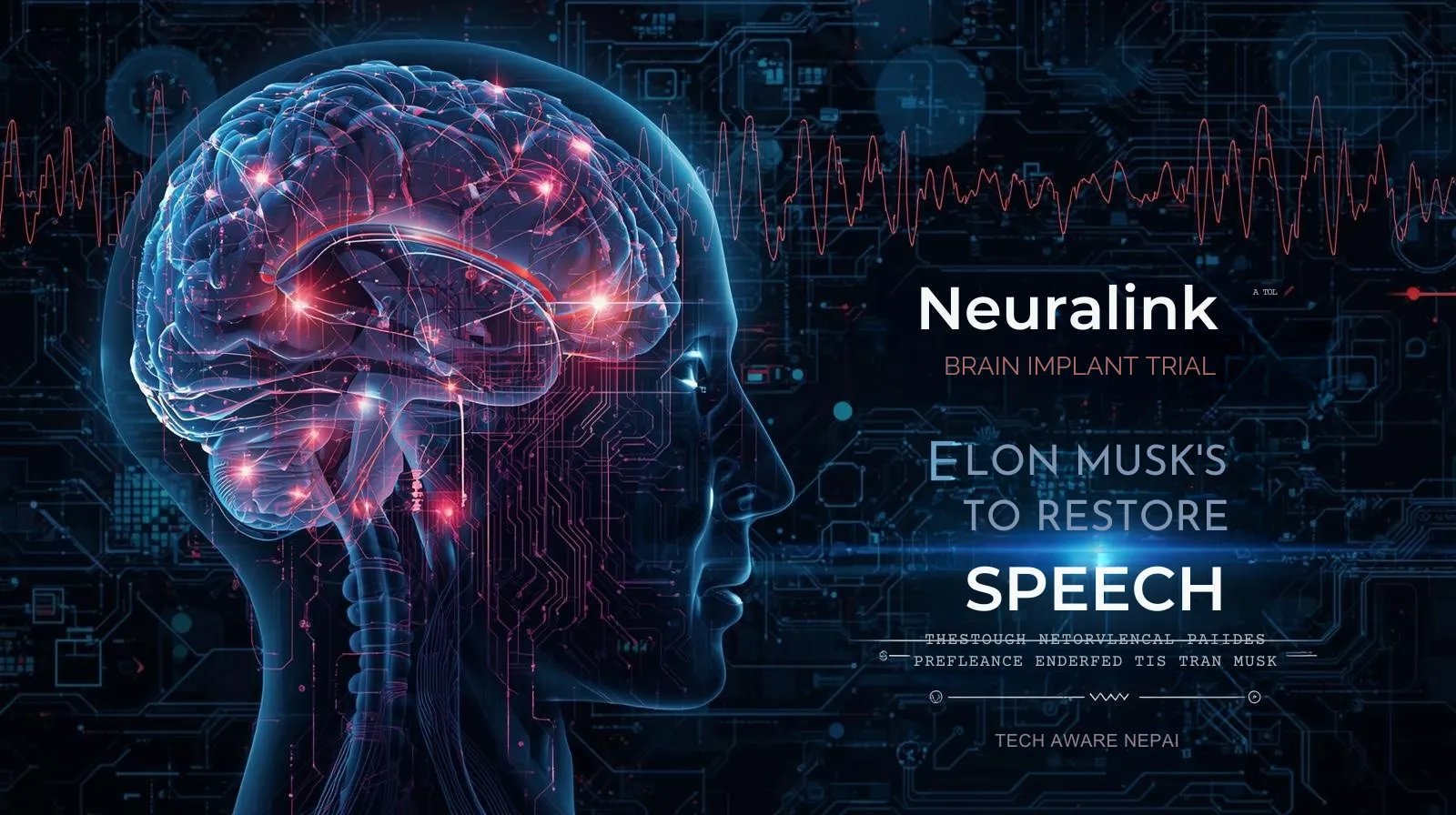
Neuralink’s Next Frontier: Elon Musk Announces Brain Implant Trial to Restore Speech
KATHMANDU, September 22, 2025 – Following the groundbreaking success of its first human trial for motor control, Elon Musk’s neurotechnology company, Neuralink, is setting its sights on an even more ambitious challenge: restoring speech. The company has announced plans to launch a new clinical trial for its brain-computer interface (BCI) implant, this time targeting individuals who have lost the ability to speak due to severe paralysis.
This move marks a significant leap from controlling a cursor with thought to decoding the complex neural signals that form human language. For the millions globally who are “locked-in”—unable to speak due to conditions like stroke, ALS, or brainstem injuries—this trial represents a profound new hope for communication.
How It Works: Translating Thought into Voice
The concept, while futuristic, is based on a clear scientific premise. When a person decides to speak, their brain generates specific patterns of neural activity, even if their body can’t produce the physical sounds. Neuralink’s implant, a coin-sized device called the “Link,” is designed to be surgically embedded in the brain to read these signals directly.
The device’s ultra-fine threads, thinner than a human hair, will monitor the activity of neurons in the brain’s speech centers. Sophisticated algorithms will then decode these signals of intended speech in real-time and translate them into text on a screen or, eventually, into synthesized speech through a speaker. Essentially, the technology aims to create a direct pathway from thought to voice, bypassing the non-functional parts of the body.
Building on Past Success
This new trial comes on the heels of the widely publicized PRIME Study, which saw the first human recipient, Noland Arbaugh, a quadriplegic, successfully control a computer cursor, play video games, and use social media using only his thoughts. While the initial trial focused on motor intent (the intention to move a hand), the speech trial ventures into the far more intricate domain of language and cognition.
“Decoding motor signals was the first step,” explained a neuroscientist familiar with BCI research. “Decoding language is an order of magnitude more complex. It requires understanding not just movement, but the very building blocks of thought and expression.”
The Road Ahead: Challenges and Hope
Neuralink’s announcement is not without its hurdles. The technical challenge of accurately decoding the nuances of language is immense, and the path from a clinical trial to a widely available medical device is long and fraught with regulatory and ethical considerations.
However, for the tech community in Nepal and around the world, this is a landmark moment. It pushes the boundaries of what’s possible in human-computer interaction and medicine. While the immediate trial will involve a small number of participants far from Nepal, the long-term implications are global. A successful speech-restoring BCI could one day give a voice back to the voiceless, fundamentally changing how we treat some of the most devastating neurological conditions.
As Neuralink begins recruiting for this next chapter, the world will be watching to see if science fiction can once again be turned into scientific fact.




